Shona Riddell travels to some of New Zealand’s precious and isolated subantarctic islands: the Snares, Enderby Island, Auckland Island and Campbell Island.
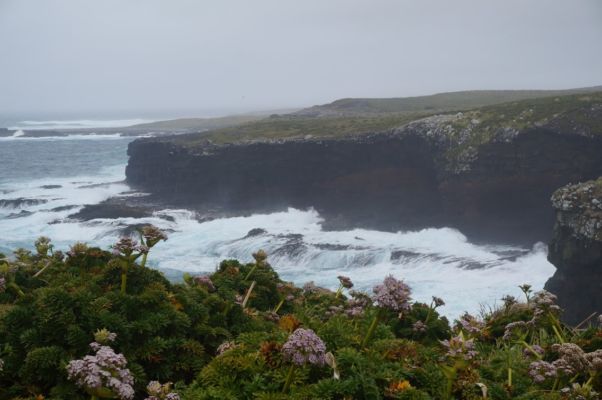
Halfway into our five-hour guided trek across the wild and remote Enderby Island, as we huddle together above a sea-lashed coastline, clutching our cameras to snap a colony of rare Auckland shags settling into their clifftop nests, one of our group blurts out: “But this is incredible! The last time I was here, 30 years ago, this was all flat pasture! It looks completely different now.”
It’s our second day of the week-long ‘Forgotten Islands of the South Pacific’ voyage, run by Heritage Expeditions, visiting some of New Zealand’s precious and isolated subantarctic islands: the Snares, Enderby Island, Auckland Island and Campbell Island. Having just experienced 36 somewhat humbling hours cresting the waves in an ocean-tossed ship, sailing 465km south of Bluff, it is a relief to reach the comparative shelter of Enderby Island.
We’ve woken to a mild 10° Celsius (this is subantarctic summer, after all) and the sun is shining: an auspicious start. Everyone’s fingers are tightly crossed that we’ll have a whole day of exploration ahead of us, because nothing is guaranteed in this boisterous corner of the world. It’s crucial to make the most of every minute while simultaneously trying not to disturb any part of the island’s pristine environment – particularly not the phalanx of large male Hooker sea lions, one of the world’s rarest sea lion species, which are guarding the beach.
Leave only footprints
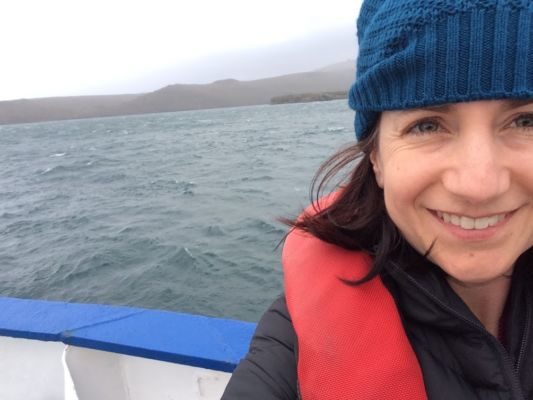
But before disembarking the ship, we have to pull out the vacuum cleaners. Not to clean the floors, but ourselves: every coat pocket, every crevice of our backpacks, inside our gloves and shoes. On deck we scrub and treat our gumboots and tramping boots. Not just once, but for every subantarctic island we visit. It’s all part of DOC’s strict quarantine rules, because each island has its own endemic species and transferring a single foreign seed or rogue insect could cause havoc and potentially undo decades’ worth of conservation work.
Our tour group consists of 50 of the very few annual (human) visitors to the subantarctic islands. Visitor numbers are capped at 600 per year, concession grants are limited to half a dozen companies, and paid permits are mandatory for both Kiwi and international visitors to raise much-needed funds for track repairs and other maintenance.
But tourism, while strictly monitored, is essential. It provides the sort of word-of-mouth publicity and awareness that only a real-life experience can generate. As Heritage founder Rodney Russ told the accompanying Newshub crew during our time at Campbell Island: “You can read all the books, you can watch all the documentaries… but until you stand up here amongst the tussock and see the albatross, it’s then that you take ownership.”
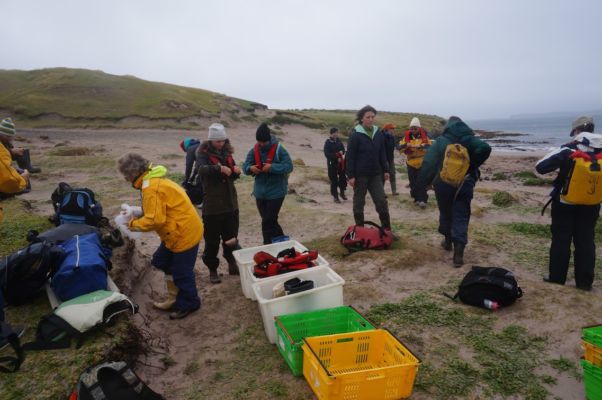
The growing awareness of these ‘forgotten islands’ hasn’t dramatically affected the number of people signing up to visit the subantarctics, according to the Department of Conservation, but there can be significant variation year on year. Unpredictable weather patterns and the fluctuating frequency of scientific research trips are both contributing factors, while the relative distance from mainland New Zealand over the open sea can also be daunting for some (pack your seasickness meds).
The small number of visitors works in the islands’ favour in terms of preserving their unique ecosystems and minimising human interference. But two centuries ago, it was a very different story.
The human history of the islands
The Auckland Islands were discovered by Captain Bristow in 1806 and claimed for Britain. The following decades saw whalers and sealers plundering the coastlines and waters to make their respective fortunes, almost wiping out the local whale, fur seal and sea lion populations.
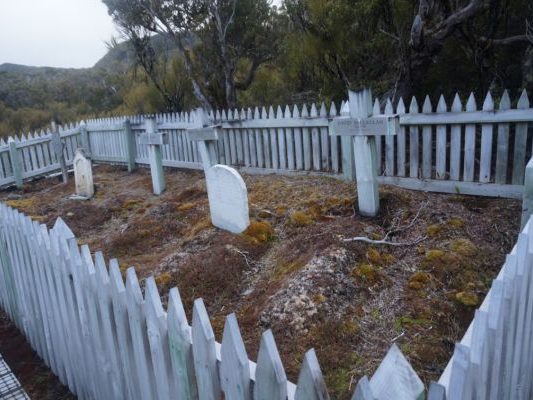
In the early 1840s a group of Ngāti Mutunga Māori and their Moriori slaves settled on the Auckland Islands, remaining for over a decade, and in 1849 there was also a short-lived British colony named Hardwicke, arriving from England with just 60 men, women and children (my ancestors were among them; apparently there were just three rain-free days in almost three years).
Subsequent decades saw a series of shipwrecks on the islands’ jagged cliffs, causing untold fatalities and leaving castaways desperate for rescue. In the late 1800s there were further ill-fated farming attempts, and during World War Two there were billeted coastwatchers.
On Campbell Island, which is further south of the Auckland Islands, there were temporary whaling crews and also a sheep station from the 1890s to the 1930s. A meteorological station was established in the 1940s and became automated from the mid-1990s.
Introduced vs. native animals
Throughout these varying stages of deliberate and accidental inhabitation of the islands, thousands of animals were introduced – primarily as food for luckless castaways and visiting ships, which also carried the usual rodent stowaways. Cattle, sheep, pigs, goats and rabbits all created a massive impact on the delicate ecosystems of the subantarctic islands. Rats devoured the small birds on Campbell Island and sea lion pups suffocated in the rabbit burrows on Enderby Island, while the cattle and rabbits also reduced the plant life to a grassy carpet.
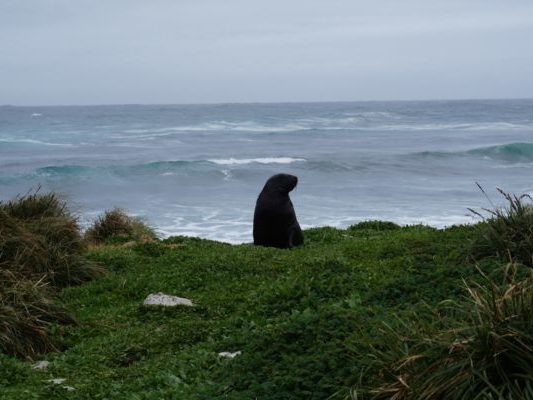
Meanwhile, 19th-century settlers lit large scrub fires to clear the land on Auckland and Enderby Islands for pasture and attempted to cultivate potatoes, cabbages and radishes in the peaty ground.
But the islands, unsurprisingly in retrospect, proved inhospitable for farming. From the mid-20th century the Auckland Islands were uninhabited by humans and there was a growing awareness of their wild beauty and precious, endemic species, including the Hooker’s sea lion, yellow-eyed penguins, wandering and southern royal albatrosses, and southern elephant seals. The islands became national nature reserves, and since the 1970s the New Zealand Department of Conservation has been working to restore the islands to their pre-human state (the islands became part of New Zealand in the 1860s). In 1998 the subantarctic islands became a UN World Heritage Site, giving them equal status to Mount Everest and the Grand Canyon as one of the world’s most treasured natural wonders.
A war is waged
In the 1970s, New Zealand’s subantarctic predator eradication mission began, kicked off initially by Wildlife Service, NZ Forest Service, Lands and Survey and other agencies, and continuing when the Department of Conservation was formed in 1987. By the early 1990s the cattle, mice and rabbits were gone from Enderby Island, and the goats and mice had also been removed from the main Auckland Island (the cattle and goats were shot, the rabbits were shot or poisoned, and the mice were poisoned). Some of the wild cattle and French blue rabbits were collected by Rare Breeds NZ and retained for their unique genetic qualities, which had evolved from a century of exposure to the isolated conditions and intense climate.
The sheep and rats were removed from Campbell Island in three stages, beginning in the 1970s (the sheep were shot, the rats were poisoned with cereal baits) and both were eliminated by the early 2000s – setting a new standard as a large, rat-free island.
Staging a comeback
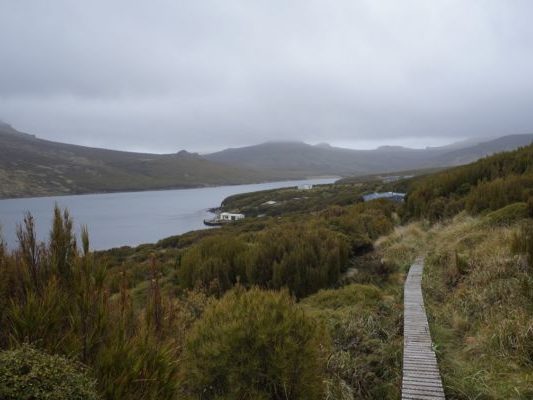
The subsequent transformation of Campbell and Enderby Islands in recent years has been dramatic: not exactly a makeover, but a return to something resembling their original state. Rare birds, some removed for protection such as the Campbell Island flightless teal, were slowly returned and began to thrive. Now there are estimated to be over 500 (we saw three of them in one morning during our December 2016 trip).
Enderby Island has been predator free since 2011. There are now abundant meadows of megaherbs, giant-leafed plants with tropical-looking flowers that seem extraordinarily vibrant in such an untamed environment. Forests of rata, their twisted branches blooming with red flowers in the summer, are filled with the melody of bellbirds. Red-crowned parakeets, Auckland Island pipits, tomtits, giant petrels and banded dotterels all made appearances as we hiked in collective awe across the island.
Ongoing challenges
But the battle is not over yet. While Enderby Island can be proud of its predator-free status, threats from nearby Auckland Island remain. There are still estimated to be 1,000 wild pigs running amok, descendants of the pigs brought over by the first European explorers, and DOC is in the early stages of figuring out exactly how to remove them all in the most efficient way.
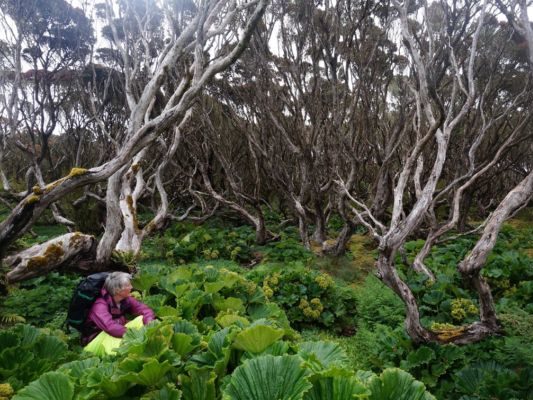
“It’s not simple,” says DOC senior biodiversity ranger Ros Cole. “It’s steep, there’s tight vegetation and a range of altitudes. It’s about figuring out the most cost-effective method of eradication.”
Getting around is certainly a challenge. Auckland Island is the largest subantarctic island, 42km long and 23km wide, with 50,000 hectares of steep, boggy terrain and dense scrub. Its southern and western coasts are continuously battered by ferocious waves that are whipped up by the frequent southwesterly gales from Antarctica (they’re not called the Roaring Forties and Furious Fifties latitudes for nothing), and the weather can turn on a dime.It rains almost every day and summer hailstorms are not uncommon.
“It’s outstanding down there in terms of the wildlife, but also very intense and we can’t underestimate the conditions,” emphasises Cole.
“We also have to target our work and make sure we clean [the islands] up properly without impacting on them unnecessarily. We’re always conscious of the impact people can have if we don’t manage things properly.
“There will be biosecurity risks, even to the predator-free islands, until the predators are all eradicated.”
Shona travelled to the Auckland Islands courtesy of Heritage Expeditions (www.heritage-expeditions.com). Her great-great grandmother was born on Auckland Island in 1851 and Shona is writing a historical novel about the Hardwicke settlement.

